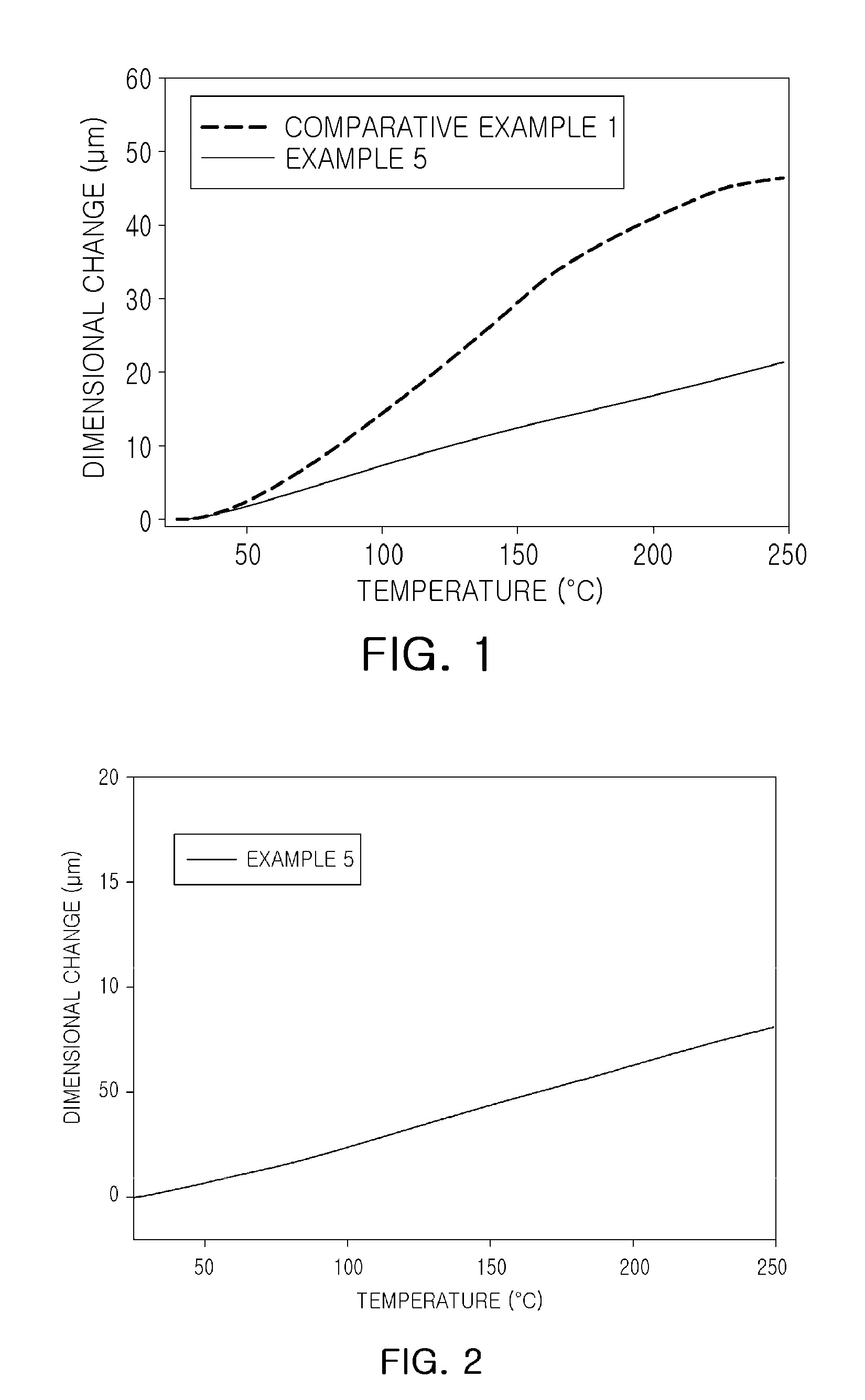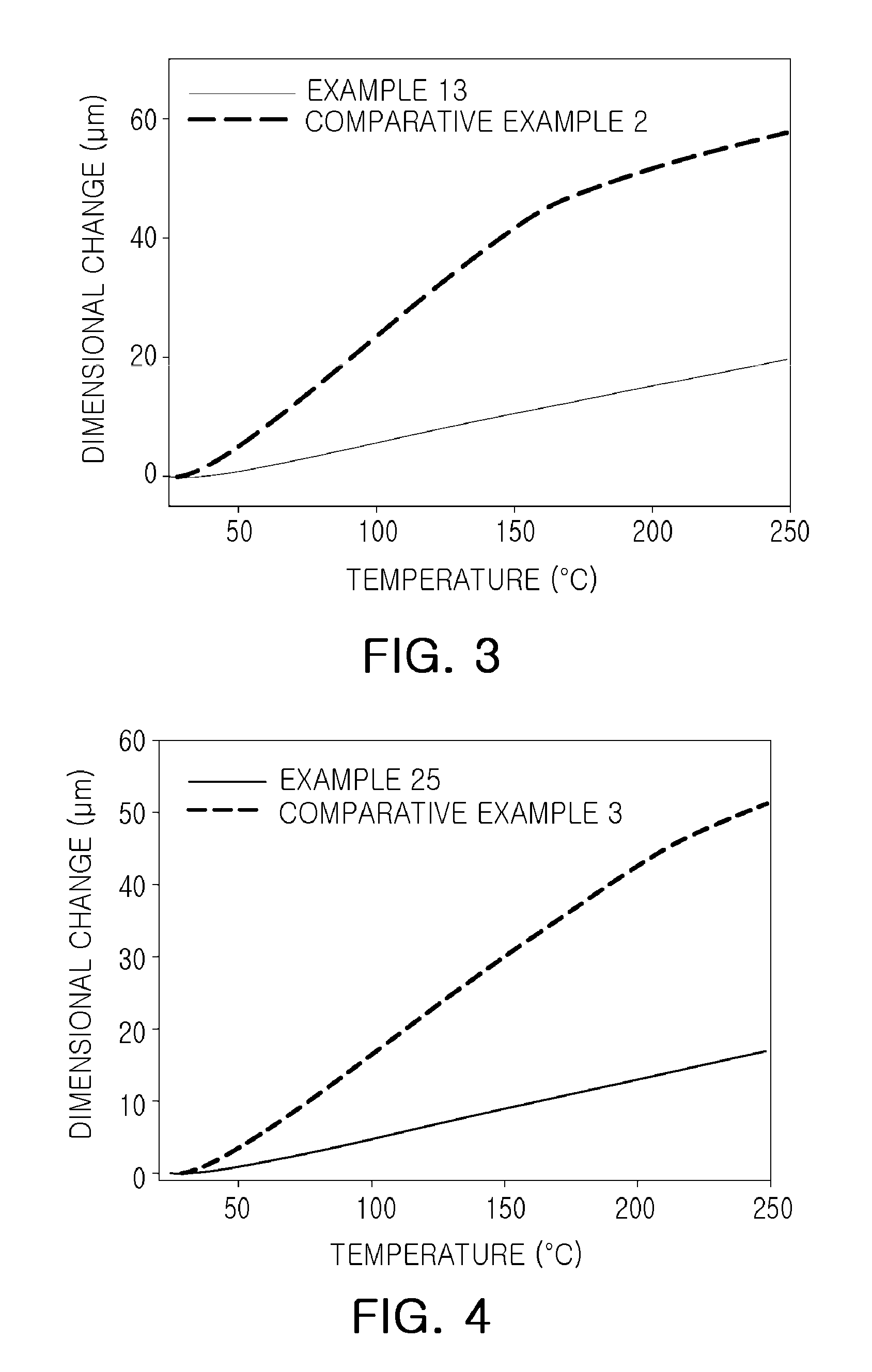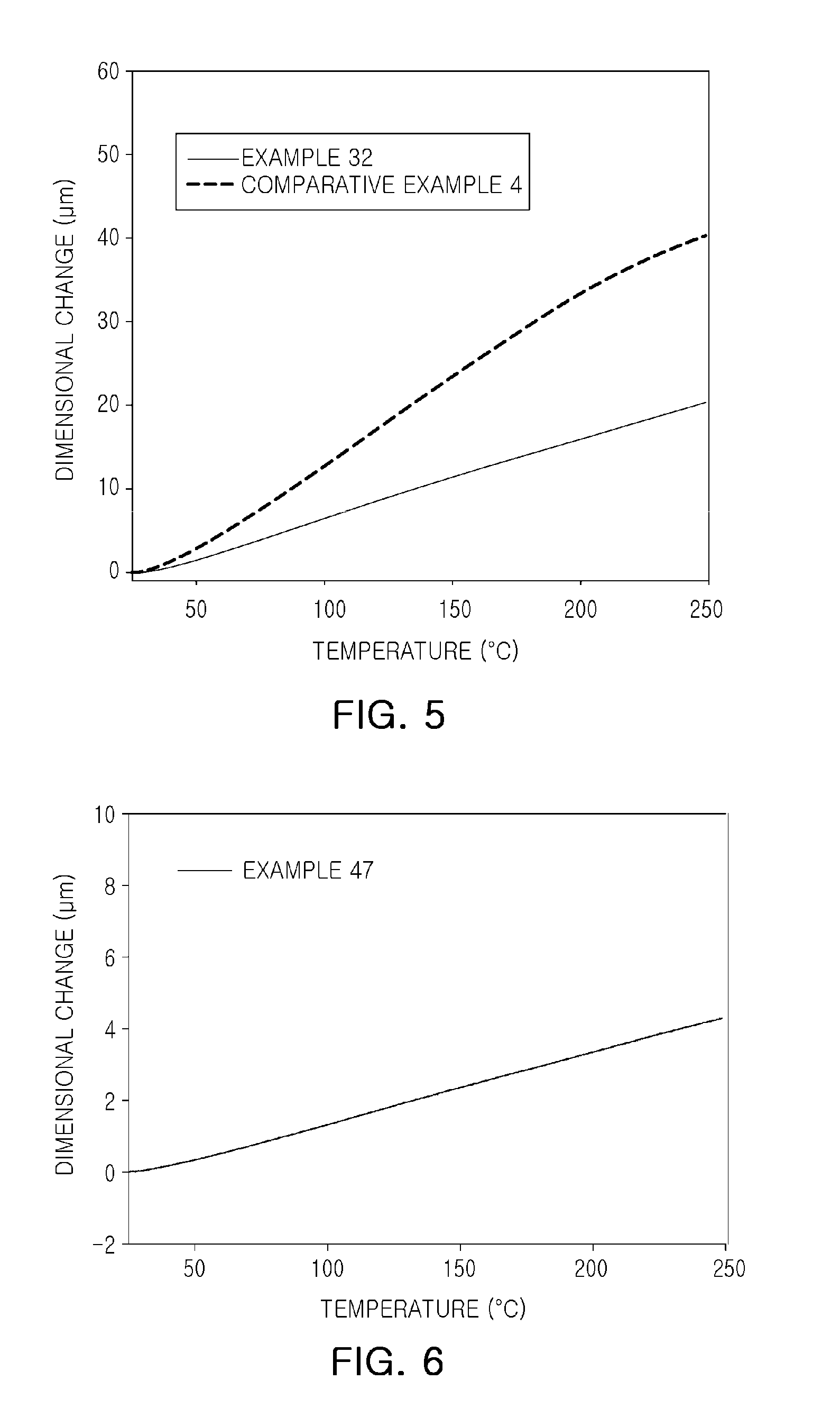Epoxy compound having alkoxy silyl group, composition comprising same, cured product, use thereof and method for preparing epoxy compound having alkoxy silyl group
a technology of epoxy compound and alkoxy silyl group, which is applied in the field of epoxy compound, can solve the problems of product defects, warpage of substrates, and significant limitations in the properties and processability of polymer materials, and achieve the effects of reducing improving heat resistance properties, and improving the cte of epoxy composites
- Summary
- Abstract
- Description
- Claims
- Application Information
AI Technical Summary
Benefits of technology
Problems solved by technology
Method used
Image
Examples
synthetic example a1 (
Synthetic Example A1(1)
Synthesis of Triphenylmethane-Based Epoxy Having Alkoxysilyl Group (Formula AI) (Method 1)
[0559]According to the following methods, Formula AI having a ratio of [epoxy group]:[alkoxysilyl group]=1:1 was synthesized.
[0560](1) First Step
[0561]25 g of tri(4-hydroxyphenyl)methane (TCI, The same may apply hereinafter.), 16.6 g of allyl bromide (Sigma Aldrich, The same may apply hereinafter), and 300 ml of THF were inserted in a two-necked flask at room temperature, followed by stirring. Then, a solution with 5.8 g of sodium hydroxide dissolved in 150 ml of H2O was slowly added thereto for 1 hour at room temperature, followed by stirring for 4 hours. Subsequently, 39.6 g of epichlorohydrin (Sigma Aldrich, The same may apply hereinafter) was added in the flask, and a solution with 6.8 g of sodium hydroxide dissolved in 150 mol of H2O was added thereto for 10 minutes at room temperature, followed by stirring for 19 hours. After stirring, THF was removed by using an ev...
synthetic examples a1 (
Synthetic Examples A1(2) to A1(4)
Synthesis of Triphenylmethane-Based Epoxy Having Alkoxysilyl Group (Formula AI) (Method 1)
[0567]By performing the same reactions of the first step and the second step of Synthetic Example A1(1) except for using different amounts of the reacting materials, compounds of Formula AI were synthesized. The ratio of epoxy group:alkoxysilyl group of Formula AI synthesized in Synthetic Example A1(2), Synthetic Example A1(3), and Synthetic Example A1(4) were 2:1, 2.5:1, and 3:1, respectively, and the amounts of the reacting materials used in each synthetic step are illustrated in the following Tables.
TABLE A1Amounts of reacting materials used in thefirst step for synthesizing Formula AINaOH in[EpoxySynthetic150 ml H2Ogroup]:[alkenylExampleTri(4-AllylFirstSecondgroup] of(1 / 2 step)hydroxyphenyl)methanebromideEpichlorohydrinTHFinsertioninsertionFormula A11A1(2)25 g11.4 g 47.5 g300 ml4.1 g10.3 g2:1A1(3)25 g9.3 g47.5 g300 ml3.8 g10.3 g2.5:1 A1(4)25 g8.3 g47.5 g30...
synthetic example a2
Synthesis of Triphenylmethane-Based Epoxy Having Alkoxysilyl Group (Formula AI) (Method 2)
[0569](1) First Step
[0570]25 g of tri(4-hydroxyphenyl)methane, 100 g of allyl bromide, and 400 ml of THF were inserted in a two-necked flask, followed by stirring at room temperature. Then, a solution with 7.5 g of sodium hydroxide dissolved in 400 ml of H2O was slowly added thereto for 1 hour at room temperature, followed by stirring for 1 hour. After stirring, THF was removed by using an evaporator, and 400 ml of ethyl acetate was added and worked-up with H2O to remove inorganic materials. In an organic layer, MgSO4 was added to remove remaining H2O. The organic layer thus obtained was filtered using a celite filter, evaporated and dried to obtain 20 g of Intermediate Product A21.
[0571]1H NMR (400 MHz, CDCl3). δ=6.99 (d, 4H, J=8.8 Hz), 6.94 (d, 2H, J=8.8 Hz), 6.82 (d, 4H, J=8.8 Hz) 6.73 (d, 2H, J=8.8 Hz), 6.09-5.99 (m, 2H), 5.42-5.02 (m, 6H), 4.50 (dt, 4H, J=5.2 Hz, 1.2 Hz)
[0572](2) Second St...
PUM
| Property | Measurement | Unit |
|---|---|---|
| Dynamic viscosity | aaaaa | aaaaa |
| Dynamic viscosity | aaaaa | aaaaa |
Abstract
Description
Claims
Application Information
 Login to View More
Login to View More - R&D
- Intellectual Property
- Life Sciences
- Materials
- Tech Scout
- Unparalleled Data Quality
- Higher Quality Content
- 60% Fewer Hallucinations
Browse by: Latest US Patents, China's latest patents, Technical Efficacy Thesaurus, Application Domain, Technology Topic, Popular Technical Reports.
© 2025 PatSnap. All rights reserved.Legal|Privacy policy|Modern Slavery Act Transparency Statement|Sitemap|About US| Contact US: help@patsnap.com



